21 incredible facts about Elon Musk's Gigafactory
The factory is located on a plot of land that is more than three times the size of Central Park.

The factory itself is also huge and is getting even bigger.
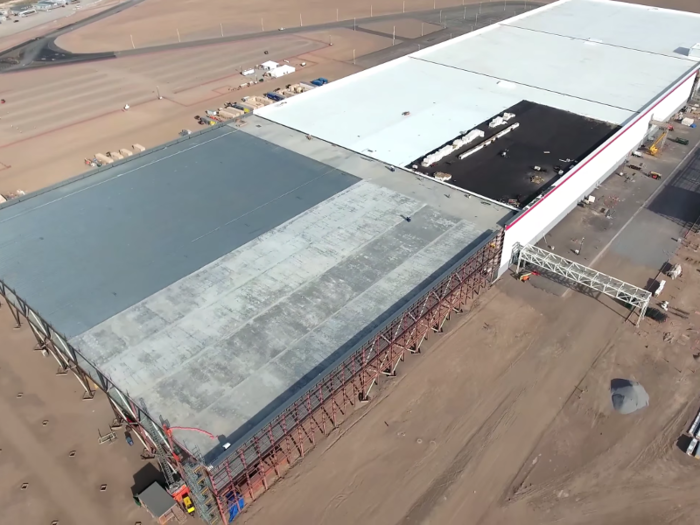
The factory stretches for about 6 million square feet, or the equivalent of 126 acres.
To put that into perspective, the footprint of the building could fit about 100 Boeing 747 jets.
It’s so big, in fact, that it will be the world’s largest building by footprint.
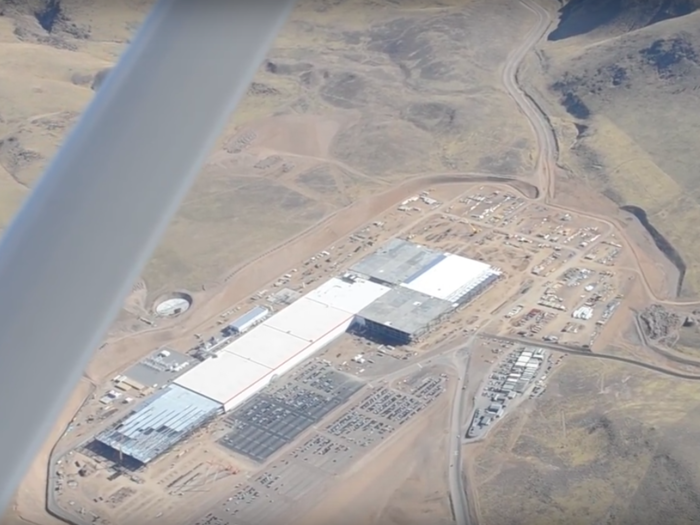
While the footprint of the building is about 6 million square feet, the total planned floor space could exceed 10 million square feet. This is because some parts of the building will be broken down into several stories.
"The Gigafactory, when it's complete, will have the biggest footprint of any building in the world. Counting multiple levels it could be as much as 15 million square feet," Musk said during an interview with Leonardo DiCaprio for the upcoming documentary "Before the Flood."
Once it’s complete, it will be the largest building by footprint and will only be slightly smaller in volume than Boeing’s plant in Everett, Washington. As of July, the factory was only 14% finished.
Musk and Tesla employees refer to the factory as the "alien dreadnought."
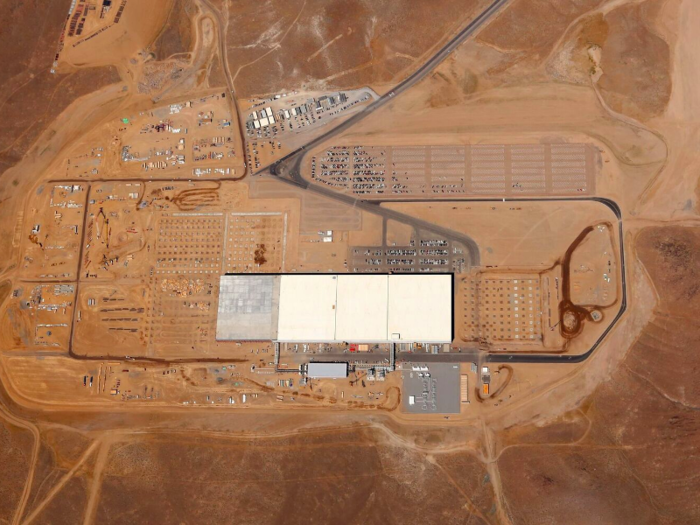
Elon Musk said during the company's recent third quarter earnings call that he and employees refer to the giant factory as the 'alien dreadnaught.'
It is built to sustain earthquakes.
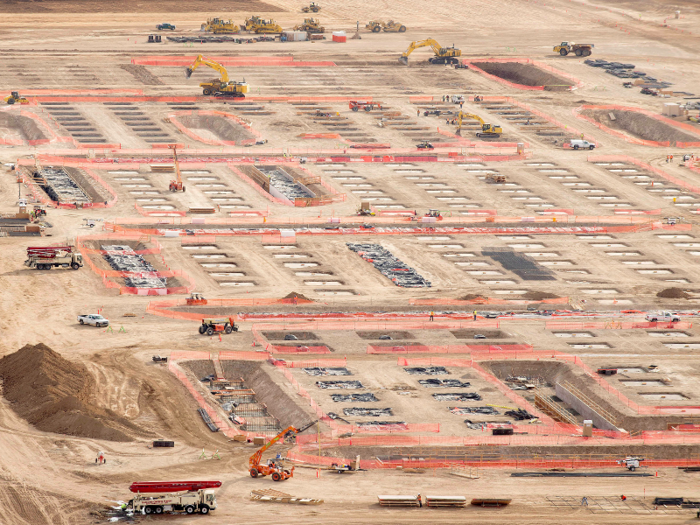
According to building permits acquired by BuildZoom, the factory is composed of four different structures built on four separate foundations so that it can better withstand earthquakes.
According to the Reno-Gazette Journal, Tesla has spent an estimated $16 million on the foundation alone so far.
It will make Tesla’s next car much more affordable.
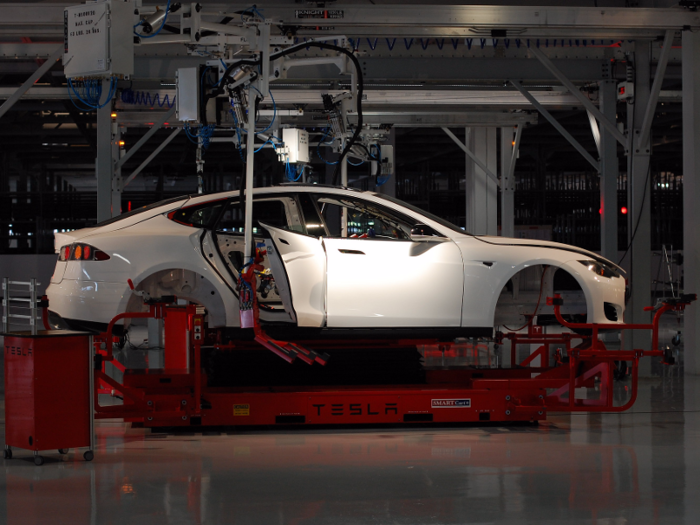
According to Tesla’s website, the giant factory will help it dramatically cut the cost of its batteries by “using economies of scale, innovative manufacturing, reduction of waste, and the simple optimization of locating most manufacturing process under one roof.”
Once the factory is fully operational by 2020, Tesla estimates the factory will enable it to reduce its battery prices by about 30%.
The lowered cost of the batteries will enable the company to price its Model 3 at about $35,000.
Rail cars will transport the raw materials that will be turned into batteries.
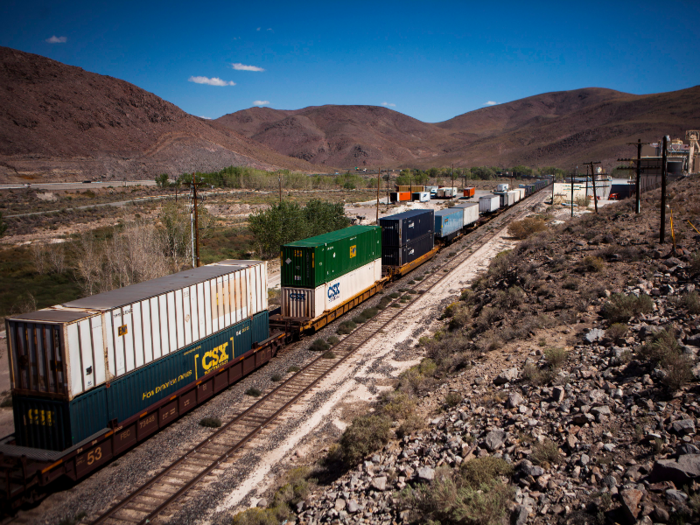
Though Tesla hasn’t revealed all of the ways it will reach “extreme economies of scale” at the Gigafactory, we know that recycling will be a huge part of the effort. So much so that Tesla will do things that no other battery manufacturer has ever done before, Musk said last year at the Baron investors' conference.
"What we are doing at the Gigafactory is consolidating the production of the pack all the way from the raw materials," Musk said. "So there's literally cars coming in from the mines, like rail cars of raw materials from the mines, and then out come completely finished battery packs and this has actually never been done before, for batteries at least."
Everything will be recycled.
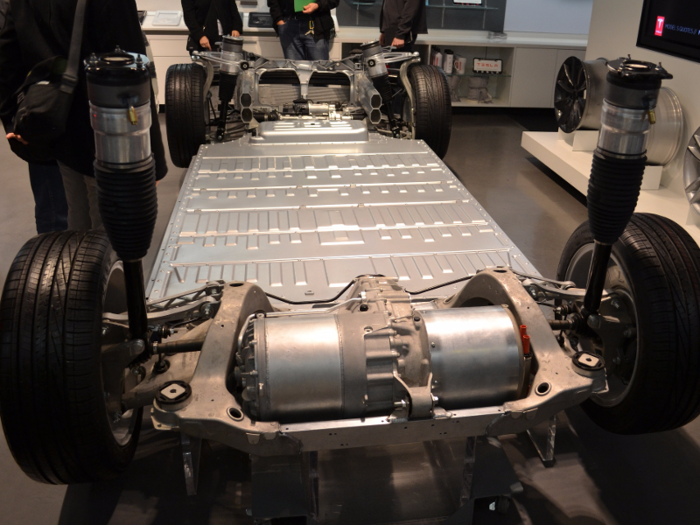
The factory will be decked out with a state-of-the-art recycling system and will provide recycling capability for old battery packs.
Tesla aims to only use renewable energy to power the factory.
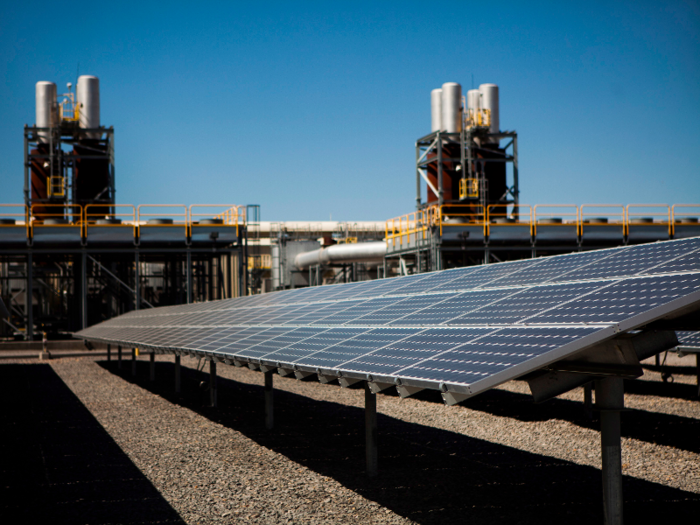
The factory will create all of the energy it needs.
The roof of the factory will be lined with some sort of solar panel. Additional solar panels will be placed on surrounding hilltops to capture more energy.
The company will also utilize geothermal and wind power to meet energy demands.
Keeping with its natural theme, wild horses can also be spotted around the manufacturing plant.
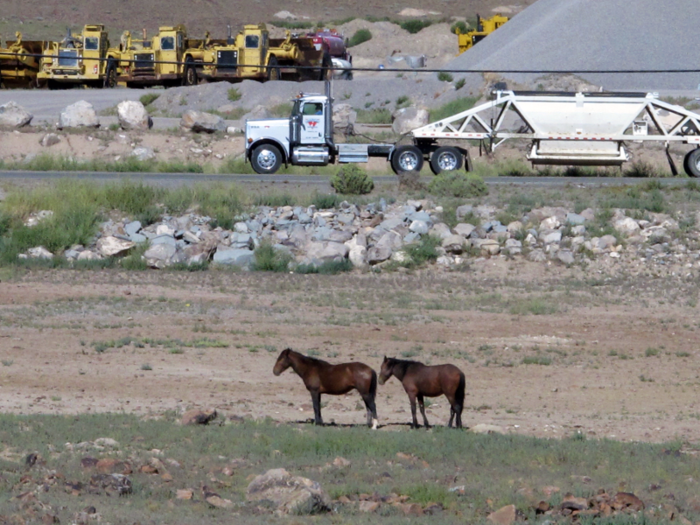
A Tesla representative told Business Insider that wild horses can often be spotted roaming around the factory.
The factory will have a 1.5 million gallon water tank.
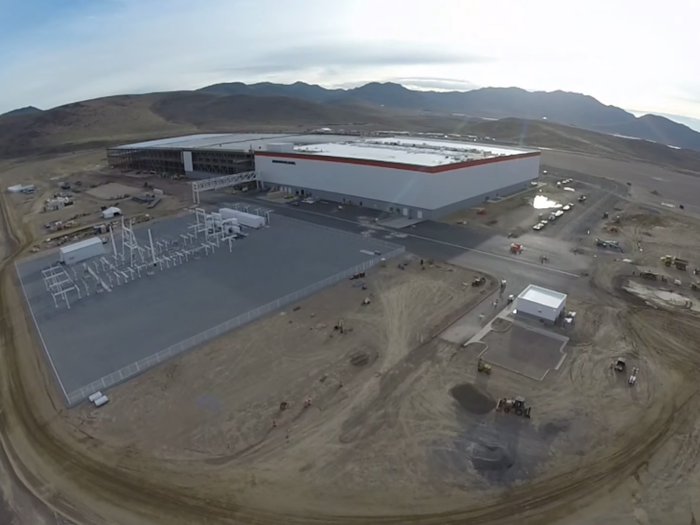
According to BuildZoom's website, which is tracking the permits for the Gigafactory, the facility will have a ginormous water tank.
BuildZoom posted the permit for the 1.5 million gallon steel water storage tank on its website. To help put that into perspective, that's about the twice the amount of water that is used in an Olympic size swimming pool, BuildZoom states.
It will be the largest lithium-ion battery factory in the world.
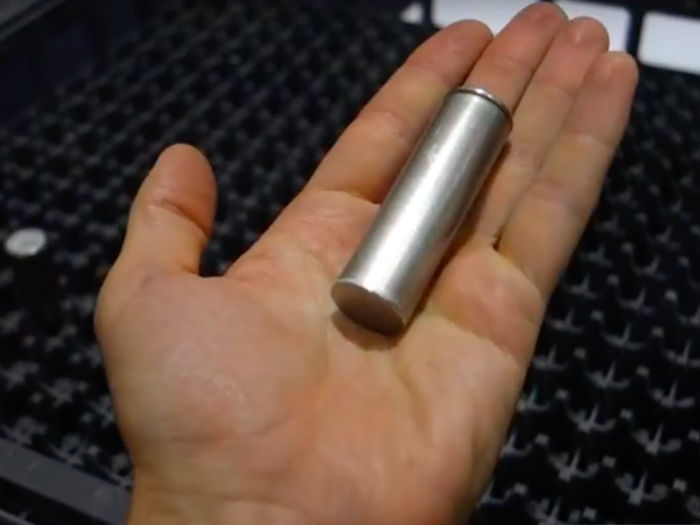
Tesla is already the biggest consumer of lithium-ion on the planet, surpassing even device manufacturers like Apple and Samsung. But it will soon also become the biggest producer of lithium ion batteries.
Tesla aims to build one million cars per year by the later half of this decade.
To power all of those cars, the company will produce more battery cells at its plant by 2020 than all of the lithium-ion battery makers combined created in 2013.
It will cost Tesla and its partners billions.
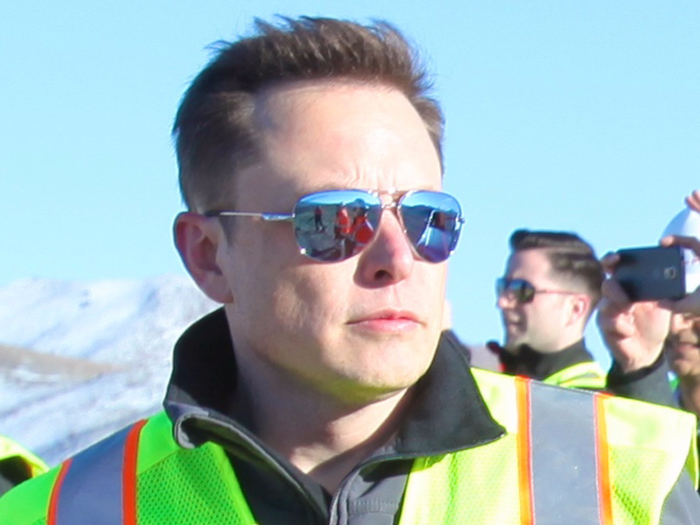
Tesla and its partners will collectively invest about $5 billion into the factory by 2020. Tesla itself will directly invest about $2 billion in the Gigafactory.
Panasonic, which is manufacturing and supplying the lithium-ion cells to Tesla, plans to invest a total of $1.6 billion in the factory.
Cell manufacturing at the plant will be extremely fast.
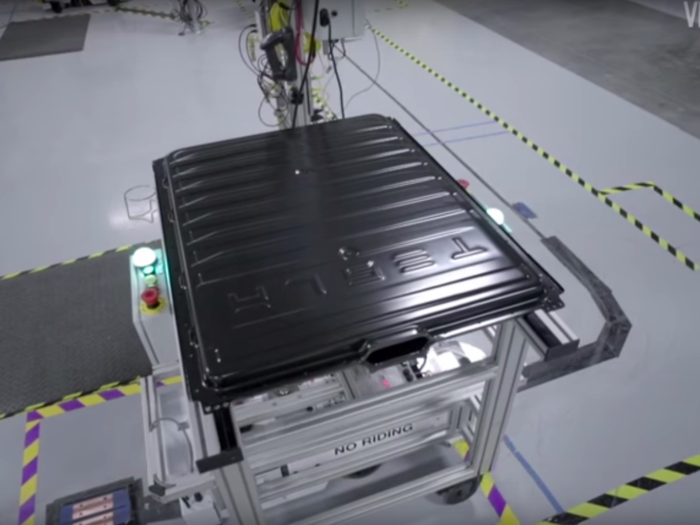
Musk has made no qualms about Tesla becoming the best manufacturer in the world and the Gigafactory will play a big part in helping the company get there.
"Our engineering team has worked very closely with Panasonic to make dramatic improvements to the cell manufacturing efficiency. I think we’re probably approaching 3x the efficiency of the best plant in the world. I think that’s pretty good. Cells will be going through that thing like bullets from a machine gun. In fact, the exit rate of cells will be faster than bullets from a machine gun," Musk said during an analyst call in June.
More than 6,000 employees will work at the facility.
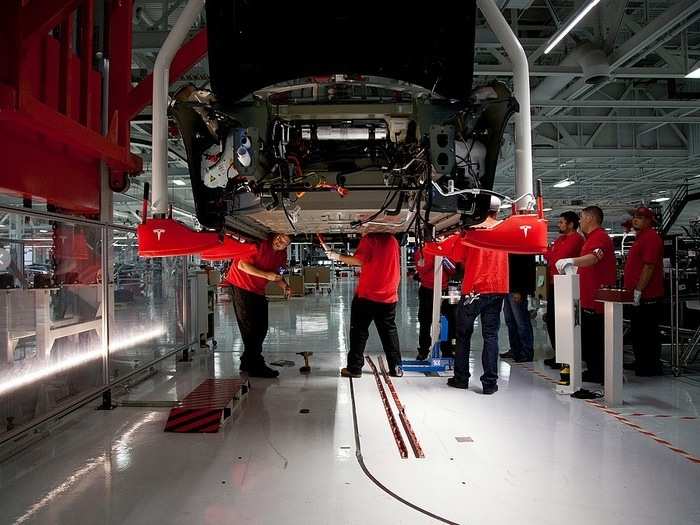
Once the factory is finished in 2020, it will house some 6,500 employees.
According to a Bloomberg report, there were about 350 employees already working there as of May.
According to Tesla's website, the company is currently hiring for some positions at the facility, including people who work in human resources and engineering technicians.
But robots will also be used to perform some tasks.
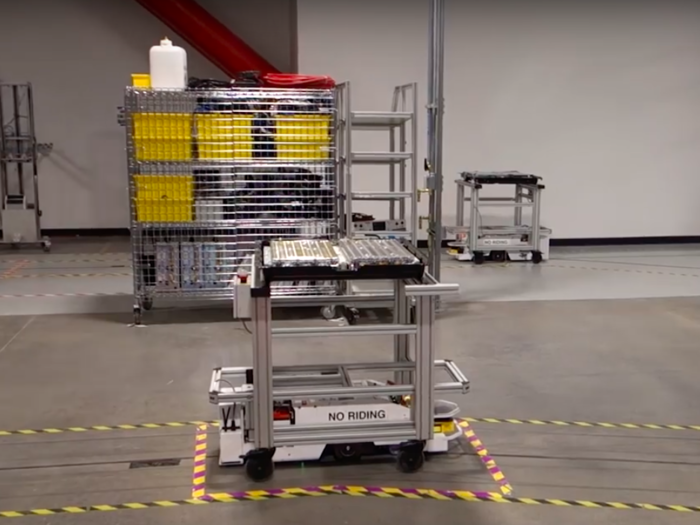
Robots will roam around certain areas of the Gigafactory.
In April, Vice got a look inside part of the factory where mobile robots called "automated guided vehicles" (AGVs) moved around the factory floor.
AGVs are commonly used in manufacturing settings for moving items from one point to another.
The robots navigate on their own by following magnetic tape on the ground. They are also equipped with sensors and a laser system to help guide them.
Besides the AGVs, the Gigafactory is also equipped with robotic arms that assist humans in making the battery packs at the plant.
Conference rooms in the factory are named after chemical elements.
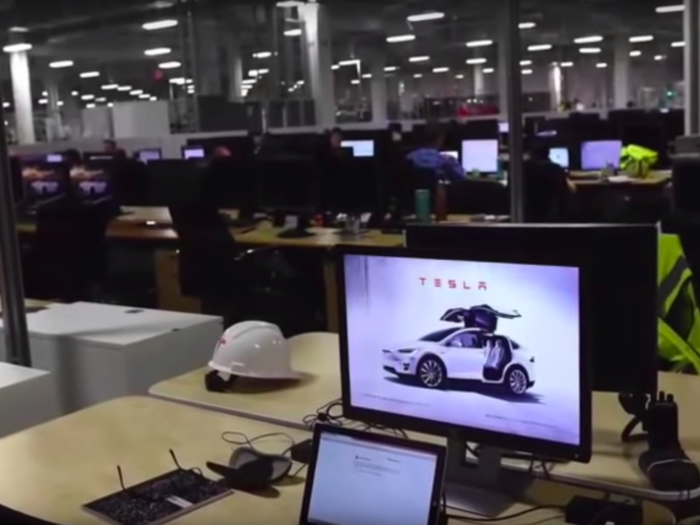
Specifically, the conference rooms are named after chemical elements that relate to producing Tesla's batteries, according to a report from Bloomberg. This includes lithium, cobalt, nickel, aluminum, and silicon.
Tesla plans to build more Gigafactories down the line.
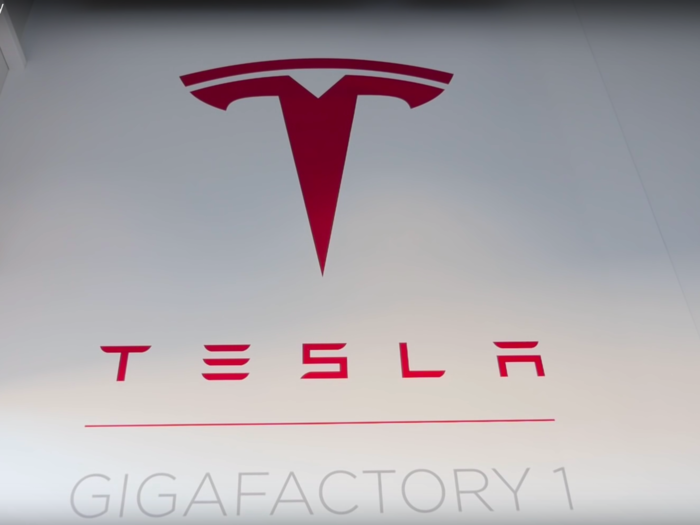
In November 2015, Musk said during the Baron Investment Conference that Tesla is looking to build more Gigafactories in the future.
"Many autoplants, and many Gigafactories I think are needed," Musk said.
In October, Musk said that Tesla would likely build its next Gigafactory in Europe, but he said that this factory would integrate car manufacturing, as well as battery production.
It would take 100 Gigafactories to power the whole world, but Tesla won't build them all.
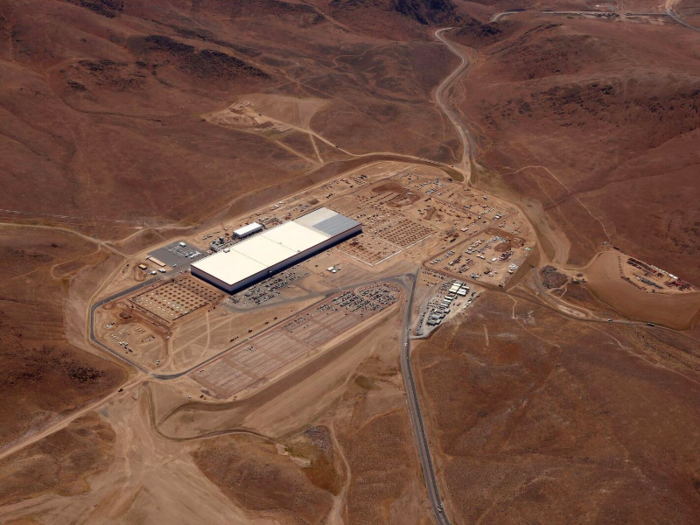
It would take 100 Gigafactories to provide enough power for the entire world, Musk said in the National Geographic documentary called "Before the Flood." But Musk said that Tesla can't be expected to build all of these factories.
"Tesla can’t build 100 Gigafactories, so the thing that is really going to make the difference is if companies much larger than Tesla do the same thing," Musk said. "If the big industrial companies in China, the US, and Europe, and the big car companies, if they also do this then collectively we can accelerate the transition to sustainable energy. And if government sets the rules to favor sustainable energy, we can get there really quickly."
Tesla plans on beginning cell production in 2017.
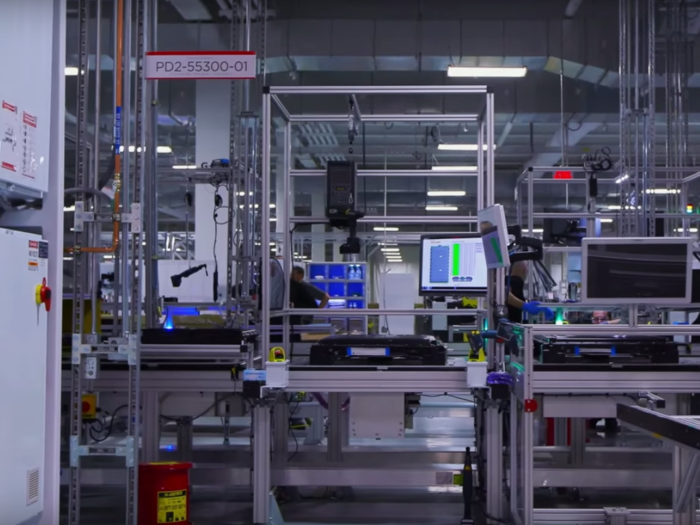
Currently, some battery packs are being produced at the factory, but not the actual battery cells. Cell production is slated to begin at the Gigafactory next year.
By 2018, Tesla aims to produce about 50 GWh worth of lithium-ion batteries at the factory. To put that into perspective, all lithium-ion battery factories combined created about 30 GWh of output in 2014.
By 2020, when the factory is expected to be operating at full capacity, Tesla claims the factory will produce 150 GWh of lithium-ion battery cells
It will be shaped like a diamond and be aesthetically pleasing.
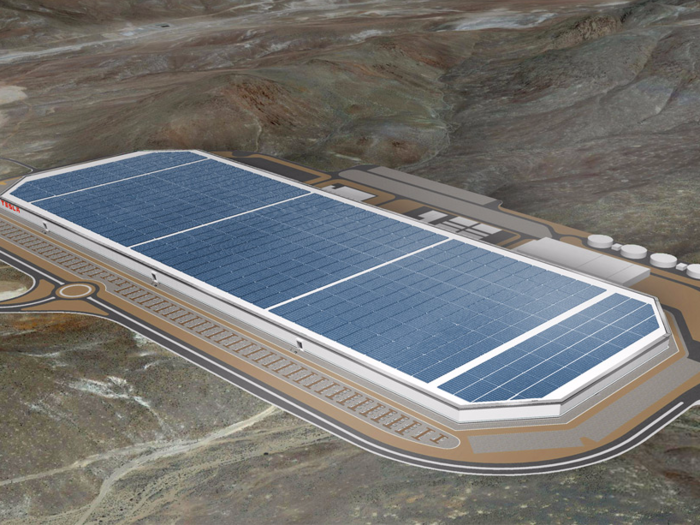
Just like with Tesla's vehicles, a lot of attention is being given to the factory's design.
"We are taking care to make sure that it looks good, that it fits in with the surroundings. It's a factory, but we care about aesthetics," Musk said during a press conference in Nevada in 2014.
"So the factory will actually be shaped like a diamond and the reason for that is if you make it a box shape, we would have had to move a lot more Earth. So in order to have it fit more in the environment, we had it shaped like a diamond," he said.
The factory is also aligned on true north so that Tesla can map out where the equipment is going to be by GPS and so the solar panels on the roof are properly aligned.
"I think it's kind of romantic to say that it is shaped like a diamond and aligned on the true north, but there are practical reasons for it as well," Musk said during the conference.
Popular Right Now
Popular Keywords
- India’s wearables market decline
- Vivo V40 Pro vs OnePlus 12R
- Nothing Phone (2a) Plus vs OnePlus Nord 4
- Upcoming smartphones launching in August
- Nothing Phone (2a) review
- Current Location in Google
- Hide Whatsapp Messages
- Phone is hacked or not
- Whatsapp Deleted Messages
- Download photos from Whatsapp
- Instagram Messages
- How to lock facebook profile
- Android 14
- Unfollowed on Instagram
Advertisement